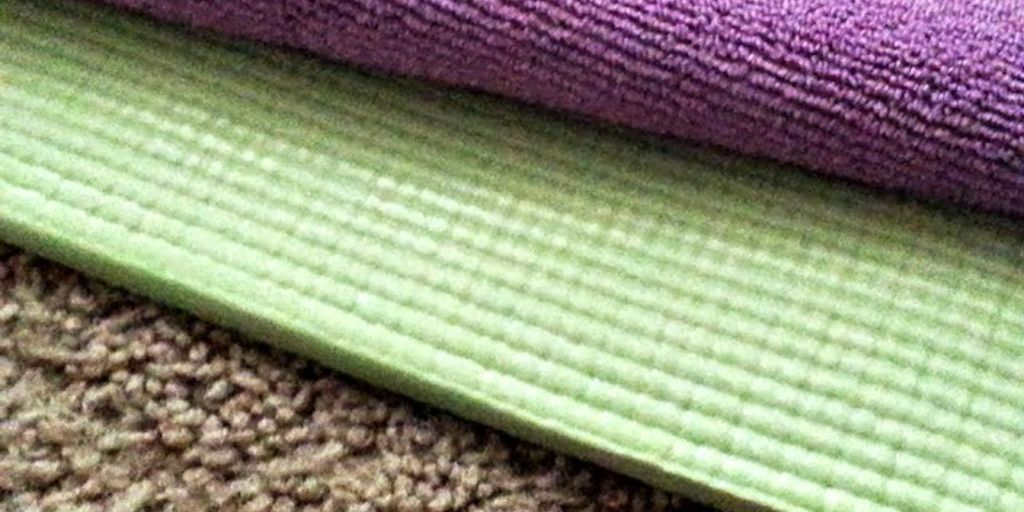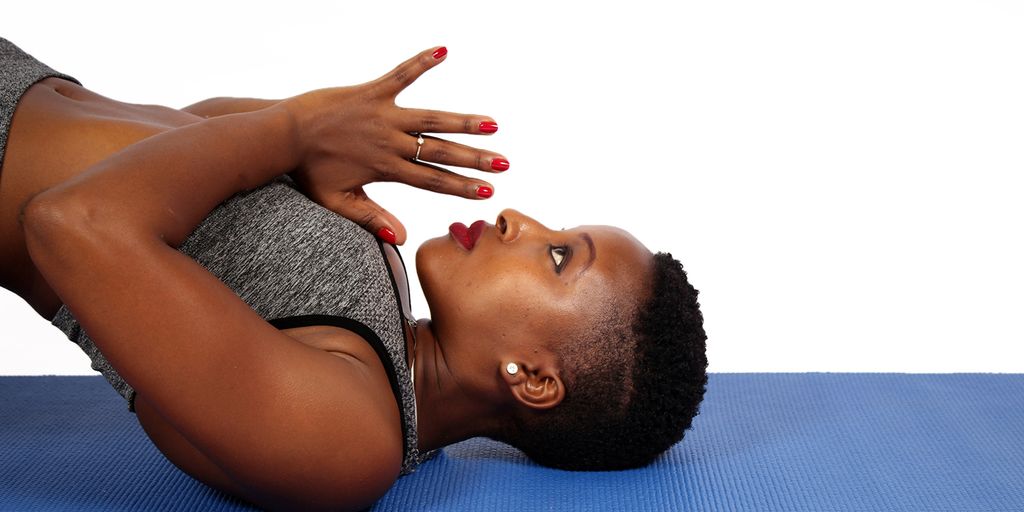
Choosing the Perfect Material for Your Yoga Mat: A Comprehensive Guide
Choosing the right material for your yoga mat is crucial for enhancing your practice and ensuring both comfort and durability. With a plethora of options available, it's essential to understand the different materials, their benefits, and how they align with your personal needs and values. This comprehensive guide will walk you through various yoga mat materials, from eco-friendly choices to durable and supportive options, helping you make an informed decision.
Key Takeaways
- Understanding the pros and cons of different yoga mat materials can help you choose the best one for your practice.
- Eco-friendly yoga mats are available in sustainable, biodegradable, and recycled materials, catering to environmentally conscious yogis.
- Durability and longevity are important factors to consider, as a high-quality mat can withstand wear and tear, offering better value over time.
- Comfort and support are influenced by the mat's cushioning, texture, and grip, which can significantly impact your yoga experience.
- Health and safety concerns, such as allergen-free and non-toxic materials, are crucial for preventing injuries and ensuring a safe practice.
Understanding Different Yoga Mat Materials
Choosing the right yoga mat is essential for a comfortable and effective practice. When selecting a mat, it's crucial to consider both the material and thickness. Various materials like PVC, rubber, and eco-friendly options such as cork and jute offer different benefits and drawbacks.
Natural Rubber Mats
Natural rubber mats are known for their excellent grip and durability. They are made from sustainable rubber trees, making them an eco-friendly choice. However, they can be heavier and have a distinct smell that some users might find off-putting.
PVC Yoga Mats
PVC yoga mats are popular due to their affordability and availability. They provide good cushioning and are lightweight. However, PVC is not biodegradable and can release harmful chemicals over time, making it a less eco-friendly option.
TPE Yoga Mats
TPE (Thermoplastic Elastomer) mats are a newer option that combines the benefits of both rubber and PVC mats. They are lightweight, durable, and free from harmful chemicals. TPE mats are also recyclable, making them a more environmentally friendly choice compared to PVC mats.
When choosing a mat, it's crucial to consider both the material and thickness. Various materials like PVC, rubber, and eco-friendly options such as cork and jute offer different benefits and drawbacks.
Eco-Friendly Yoga Mat Options
Sustainable Materials
Choosing a yoga mat made from sustainable materials is a great way to support the environment. Natural rubber, jute, and organic cotton are popular choices that offer both durability and eco-friendliness. These materials are harvested in ways that minimize environmental impact, making them ideal for those looking to find your perfect cute yoga mat for your yoga practice.
Biodegradable Choices
Biodegradable yoga mats are designed to break down more easily in landfills, reducing long-term waste. Mats made from natural rubber, cork, and TPE (Thermoplastic Elastomer) are excellent options. These materials decompose faster than traditional PVC mats, making them a more sustainable choice for eco-conscious yogis.
Recycled Content
Yoga mats made from recycled content are another fantastic eco-friendly option. These mats often incorporate recycled rubber, plastic, or even fabric scraps, giving new life to materials that would otherwise end up in landfills. Opting for a mat with recycled content not only helps reduce waste but also supports the recycling industry, contributing to a more sustainable practice.
Durability and Longevity of Yoga Mat Materials
Wear and Tear Resistance
When choosing a yoga mat, it's essential to consider its wear and tear resistance. Mats made from natural rubber and TPE tend to be more durable compared to PVC mats. This is crucial for those who practice yoga frequently and need a mat that can withstand regular use.
Maintenance Tips
Proper maintenance can significantly extend the lifespan of your yoga mat. Regular cleaning and avoiding direct sunlight can help maintain the mat's integrity. For instance, natural rubber mats should be cleaned with a mild soap solution and air-dried to prevent degradation.
Lifespan Expectations
The lifespan of a yoga mat varies depending on the material and usage. On average, a high-quality mat can last between 1 to 5 years. Natural rubber mats generally have a longer lifespan compared to PVC mats, making them a better long-term investment.
When selecting a yoga mat, consider durability, eco-friendliness, and easy cleaning to ensure you get the best value for your investment.
Comfort and Support: Material Considerations
Cushioning and Thickness
When it comes to comfort, the thickness of your yoga mat plays a crucial role. Thicker mats provide more cushioning, which can be beneficial for poses that put pressure on your joints. However, thicker mats can also reduce stability, making balance poses more challenging. Standard yoga mats are typically around 1/8 inch thick, while thicker mats can be up to 1/4 inch.
Texture and Grip
The texture of your yoga mat affects both comfort and grip. Mats with a textured surface can provide better traction, which is essential for maintaining poses without slipping. Natural rubber mats often have a superior grip compared to PVC mats. However, the texture can also impact comfort, as rougher surfaces might be less pleasant to lie on during relaxation poses.
Temperature Regulation
Some yoga mat materials offer better temperature regulation than others. For instance, natural rubber and cotton mats tend to stay cooler, which can be more comfortable during hot yoga sessions. Conversely, PVC mats might retain heat, making them less ideal for high-temperature environments.
Choosing the right material for your yoga mat involves balancing comfort, support, and the specific needs of your practice. Consider the type of yoga you practice and your personal preferences when making a decision.
Health and Safety Concerns with Yoga Mat Materials
When selecting a yoga mat, it's crucial to consider health and safety aspects to ensure a safe practice environment. Allergen-Free Options are essential for individuals with sensitivities. Natural rubber mats, for instance, may cause allergic reactions in some users. It's important to choose a mat that suits your specific needs to avoid any discomfort or health issues.
Non-Toxic Materials
Many yoga mats are made from materials that can release harmful chemicals. Opting for non-toxic mats made from sustainable materials like TPE or natural rubber can significantly reduce exposure to these substances. Always check for certifications that guarantee the mat is free from harmful chemicals.
Slip-Resistance and Injury Prevention
A yoga mat's grip is vital for preventing injuries. Mats with excellent slip-resistance provide a stable surface, reducing the risk of falls and strains. Look for mats with textured surfaces or those specifically designed to enhance grip, especially if you practice hot yoga or other vigorous styles.
Ensuring your yoga mat is both safe and comfortable can greatly enhance your practice experience. Regular maintenance and proper storage are key to prolonging the mat's lifespan and maintaining its safety features.
Cost vs. Value: Investing in the Right Yoga Mat Material
When it comes to finding the best yoga mat for your daily routine, understanding the balance between cost and value is crucial. Investing in a high-quality mat can make a significant difference in your practice, but it's essential to weigh the benefits against the price.
Budget-Friendly Choices
For those new to yoga or on a tight budget, there are several affordable options available. These mats may not offer the same durability or comfort as premium choices, but they can still provide a satisfactory experience for beginners.
Premium Material Benefits
Premium yoga mats often come with a higher price tag, but they offer numerous advantages. These include better cushioning, enhanced grip, and longer lifespan. Investing in a premium mat can be seen as a long-term investment in your yoga practice.
Long-Term Investment
Considering the long-term benefits, a high-quality yoga mat can save you money over time. Cheaper mats may need to be replaced frequently, while a durable, premium mat can last for years, providing consistent performance and support.
Choosing the right yoga mat material involves balancing initial cost with long-term value. A well-chosen mat can enhance your practice and provide lasting benefits.
When it comes to choosing the right yoga mat, balancing cost and value is crucial. Investing in a high-quality mat can enhance your practice and provide long-term benefits. Discover the perfect mat for your needs at Yune Yoga, where we offer a variety of materials to suit every yogi. Don't compromise on your practice—explore our collection today!
Conclusion
Choosing the perfect material for your yoga mat is a crucial decision that can significantly impact your practice. By understanding the various options available, such as PVC, TPE, natural rubber, and cork, you can make an informed choice that aligns with your needs, values, and preferences. Each material offers unique benefits and potential drawbacks, so consider factors like durability, comfort, eco-friendliness, and cost. Ultimately, the best yoga mat for you is one that enhances your practice, supports your body, and resonates with your lifestyle. Take the time to explore and test different materials to find the perfect match for your yoga journey.
Frequently Asked Questions
What is the best material for a yoga mat?
The best material for a yoga mat depends on your individual needs and preferences. Natural rubber offers excellent grip and eco-friendliness, PVC provides durability and affordability, while TPE is lightweight and recyclable.
Are eco-friendly yoga mats more expensive?
Eco-friendly yoga mats can be more expensive due to the sustainable materials and manufacturing processes used. However, they are often worth the investment for those concerned about environmental impact.
How do I clean and maintain my yoga mat?
Cleaning and maintenance depend on the material of your yoga mat. Generally, you can wipe down your mat with a damp cloth and mild detergent. Some mats are machine washable, but always check the manufacturer's instructions.
Can yoga mats cause allergies?
Some yoga mats, especially those made from latex or certain synthetic materials, can cause allergies. Opt for allergen-free options like natural rubber or TPE if you have sensitivities.
How thick should a yoga mat be for proper support?
The thickness of a yoga mat depends on your comfort and the type of yoga you practice. Mats range from 1/16 inch to 1/4 inch thick. Thicker mats provide more cushioning, which is beneficial for joint support.
Is it worth investing in a premium yoga mat?
Investing in a premium yoga mat can be worth it for those who practice regularly. Premium mats often offer better durability, grip, and comfort, making them a long-term investment.


